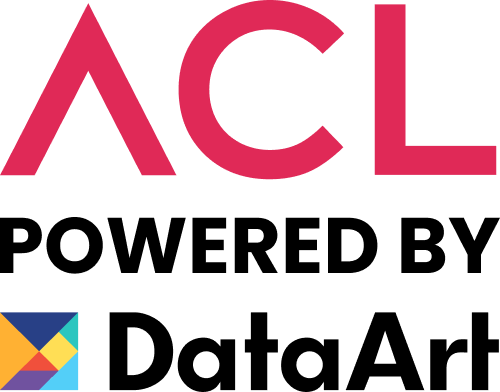It’s no news that the decision to hire Latin American software developers has become a popular cost-saving strategy when it comes to software outsourcing.
With a surge in the tech industry's growth in countries like Brazil, Argentina, Mexico, and Colombia, nearshore developers have become the perfect solutions for companies looking to save money on development costs. However, the reality behind the price tag that comes with hiring LATAM developers is often influenced by a myriad of factors that go beyond just the hourly rate or the developer’s salary. In this detailed article, we'll delve into the real cost of these developers and help you understand the true value they bring to the table.
At ACL, we pride ourselves on our unmatched expertise in recruiting top-tier developers from Latin America. With a legacy spanning over three decades and an impressive roster of over 700 developers from 14 Latin American countries, our footprint in the region is significant. Our credentials are further endorsed by our partnerships with renowned industry leaders, including IBM, Deloitte, Oracle, and Walmart, to name a few. Our success is anchored in the dedication and precision of our team of 25 recruitment specialists. In just the last two years, we've meticulously reviewed over 5,000 developer applications, ensuring that only the absolute best join our ranks. With such vast experience and a keen eye for talent, ACL stands as the benchmark in Latin American developer recruitment. To get a comprehensive view of our clientele and endeavors, we invite you to explore further.
The Real Cost of Latin American Software Developers: The True Value Behind the Investment
The Financial Perspective: Beyond Just the Salary
When considering the cost of hiring Latin American software developers, it's crucial to look beyond the base salary. According to various industry reports and market research, the average salary for a software developer in Latin America can vary significantly depending on the country, experience, and skill level. While these numbers are certainly lower than those in the United States or Western Europe, they are competitive within the region and are rising as demand increases. Nonetheless, you can still access savings ranging from 30% to 40% compared to the cost of hiring onshore developers.
However, the real financial cost of hiring Latin American software developers encompasses more than just the paychecks. Companies must consider the total cost of employment, which includes taxes, benefits, workspace, equipment, and potential relocation expenses. Latin American countries often have different labor laws and taxation systems that can affect the overall cost. For example, in Brazil, labor benefits can add up to 68% on top of the developer’s salary, according to the Brazilian labor legislation.
Furthermore, currency fluctuations can either increase or decrease the cost in dollar terms, making financial planning for multinational companies a challenging task. Despite these additional costs, Latin America offers a competitive advantage due to the cost-benefit ratio when compared to developers in the US or Europe, even when factoring in these extra expenses. Moreover, the cost-benefit analysis comparing LATAM developers with offshore professionals still leaves the option of nearshoring to Latin America as a clear winner for companies looking to get the biggest bang for their buck. This is thanks to the way nearshore outsourcing offers additional advantages compared to offshoring, as while the prices might be higher, the time zone and cultural differences are minimal - allowing for affordable and highly efficient software solutions.
The Economic Context and Its Implications
The economies of Latin American countries are varied and often volatile, which directly affects the cost of living and, consequently, the wages of software developers. In countries experiencing economic downturns, the cost of hiring may be lower, but this can also impact the stability of the workforce and the long-term viability of the investment.
Inflation rates also play a critical role. Countries with high inflation might see a rapid increase in salary demands as developers seek to keep up with the rising cost of living. This economic instability can necessitate more frequent salary reviews and adjustments to retain talent. Paying nearshore developers in a stronger currency, such as USD, often solves this issue and makes your job openings instantly more competitive than those offered by local companies.
Talent Pool and Quality of Work
The cost of software developers is also tied to the available talent pool and the quality of work. Latin America has a burgeoning tech scene with many highly skilled developers. Initiatives like government-sponsored education programs, technology parks, and incubators have expanded the talent pool, but they have also increased the competition for top talent, which can drive up costs.
Quality, however, is where Latin American developers often shine. The region has made significant strides in improving technical education, with many developers holding degrees from reputable universities and having access to ongoing training and certifications. This emphasis on education ensures that the quality of work matches and sometimes exceeds international standards.
Language and Cultural Affinity
(EF English Proficiency Index World Map)
A non-financial cost that significantly impacts the value proposition of Latin American software developers is the cultural and language affinity, especially with North American companies. LATAM is known for boasting a decent English proficiency level throughout the region, as shown on the 2023 EF EPI Index. The shared time zones with the US and the widespread use of English in the professional environment reduce the communication barriers often faced when working with offshore teams in Asia or Eastern Europe, helping your teams achieve greater efficiency in your software development projects.
Moreover, cultural similarities can lead to better collaboration and less friction in the integration of teams. These soft factors, while not reflected in the balance sheet, have real implications for the success of software development projects and therefore should be considered as part of the real cost of Latin American software developers.
The Impact of Remote Work
The rise of remote work has had a dual impact on the cost of Latin American software developers. On one hand, it has allowed for more flexible and often less expensive work arrangements since developers do not necessarily need to relocate or work in expensive office spaces. On the other hand, the competition for remote jobs has increased globally, which can put upward pressure on wages as Latin American developers are not just competing locally but with the rest of the world - including other companies looking to outsource part of their workforce.
The remote work trend also means that companies need to invest in technology and infrastructure to enable effective online collaboration, and these costs can add up as some of the most popular remote work tools aren’t available for free. The need for robust cybersecurity measures, high-quality communication tools, and project management software can significantly impact the overall cost of maintaining a remote Latin American workforce.
Political and Social Stability
Latin America's political and social landscapes are dynamic and can affect the cost of hiring developers in the region. Political instability can lead to economic uncertainty, which in turn can impact currency values, investment climates, and operational costs. Similarly, social issues such as crime rates or strikes can disrupt business operations and lead to indirect costs.
Companies looking to invest in Latin American software development talent must stay informed about the political and social climate of the countries they are considering and have contingency plans in place to mitigate these risks.
Integration and Training Costs
Another aspect to consider when evaluating the real cost of hiring Latin developers is the integration and training process. Incorporating any new team member comes with its set of challenges and expenses. Ensuring that Latin American developers align with a company’s practices and standards may require additional training and orientation programs, especially for firms with specific processes or those in highly regulated industries.
While these costs can add up, they also represent an investment in the workforce that can lead to higher productivity and better alignment with company goals. The training process is also an opportunity to foster a more inclusive work environment and ensure that every team member, regardless of their location, feels valued and understood.
Retention and Turnover
Employee retention is a significant factor in determining the real cost of software developers. The Latin American tech industry is competitive, and talented developers are in high demand. Companies may face higher costs if they cannot retain their developers, as turnover can lead to project delays, loss of institutional knowledge, and the additional expenses of recruiting and training new hires.
Investing in a positive work culture, competitive compensation packages, and career development opportunities is crucial for retaining top talent. While these efforts require resources, they are fundamental to maintaining a stable and dedicated workforce in the long run.
Legal and Regulatory Compliance
Companies hiring Latin American software developers must navigate the legal and regulatory frameworks of each country, which can include labor laws, tax regulations, and compliance with international standards. The cost of ensuring legal compliance can be significant, especially for smaller companies or startups.
Working with local legal experts or partnering with professional employer organizations (PEOs) can help mitigate these costs. However, they will still impact the overall investment in Latin American software development talent.
Exchange Rate and Economic Policies
The fluctuating exchange rates between Latin American currencies and the US dollar can affect the cost-effectiveness of hiring developers in the region. A strong dollar may make hiring more attractive, while a weaker dollar can increase costs.
Additionally, changes in economic policies, such as revisions to tax codes or shifts in trade agreements, can alter the financial landscape. Companies must remain adaptable and informed about these economic factors to manage their investment in Latin American talent effectively.
The Opportunity Cost of Not Investing
While discussing the cost of Latin American developers, it's vital to consider the opportunity cost associated with not leveraging their talent. Companies that overlook the potential of Latin American developers may find themselves at a competitive disadvantage against companies that already decided to hire nearshore developers. The opportunity cost can manifest in several ways:
- Innovation Delays: With a growing number of tech startups and innovation hubs popping up across Latin America, local developers are often at the forefront of emerging technologies. Companies that fail to tap into this pool of talent may miss out on innovative ideas and practices that could drive their business forward.
- Market Expansion: Latin American software developers often have a deep understanding of local markets. This insider knowledge can be invaluable for companies looking to expand their operations into these regions. By not hiring from this talent pool, businesses may miss out on the subtle cultural nuances that can make or break market entry strategies.
- Cost Savings Over Time: While the initial investment in hiring Latin American developers may be significant when factoring in all associated costs, the long-term savings can be substantial. In comparison to their North American or European counterparts, the cost of maintaining a Latin American team can be more economical due to lower living costs in the region.
- Diversity and Creativity: A diverse workforce brings diverse perspectives, which can lead to more creative solutions and innovations. By not incorporating Latin American talent, companies might lack the cultural diversity that could enrich their product development and problem-solving processes.
Measuring the ROI of Hiring LATAM Developers
Ultimately, the real cost of Latin American software developers should be measured against the return on investment (ROI). This includes not only the direct outputs of their work but also the indirect benefits such as increased diversity, potential market insights, and the fostering of a global company culture.
To accurately assess ROI, companies should set clear metrics and track the performance and impact of their Latin American developers over time. This data-driven approach will help quantify the value that these developers bring to the organization and inform future hiring decisions.
The Value Behind LATAM Developers
The real cost of Latin American software developers cannot be boiled down to a simple monthly budget or hourly rate. It encompasses a wide array of factors, including salaries, benefits, training, retention, legal compliance, and the broader economic context. However, when considering the quality of work, the cultural and language affinities, and the potential for innovation and market expansion, Latin American developers represent a valuable investment for tech companies looking to thrive in a global market.
As the tech industry continues to evolve, the role of Latin American software developers will likely grow in significance. For companies willing to navigate the complexities of this investment, the rewards can be substantial - not just in terms of cost savings, but also in innovation, competitive advantage, and the ability to tap into rapidly growing tech markets.
In this light, the real cost of hiring Latin American software developers is not just a line item on a financial statement. It's an investment in a diverse, dynamic, and dedicated portion of the global workforce that is poised to play an increasingly
Ready to Hire Latin American Software Developers? We Can Help!
At ACL we ensure your software development projects are successful by helping you hire the best nearshore developers in Latin America through staff augmentation and nearshore outsourcing. Our technical recruiters will find the top LATAM talent for your development solutions and handle everything from vetting to initial interviewing. Whether you’re looking to hire a big outsourced development team or just do one direct placement, our team can help you welcome the right people to your staff.






